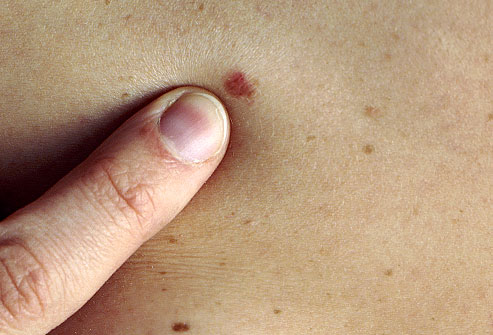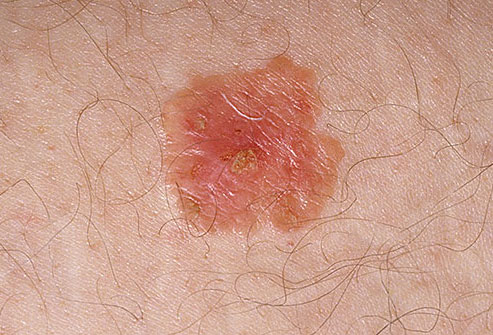Basal cell carcinoma

Basal cell carcinoma (BCC) is the most common form of skin cancer. More than two million cases of this skin cancer are diagnosed in the United States each year.
It usually develops on sun exposed skin, such as on the head, neck and back of the hands. BCC is especially common on the face, frequently appearing on the nose. It can also occur on other parts of the body including the trunk, legs, and arms.
People who use tanning beds have a much higher risk of getting BCC. They also tend to get BCC earlier in life. This type of skin cancer grows slowly and it rarely spreads to other parts of the body. If left untreated BCC can spread wide and deep, destroying skin tissue and bone.Treatment is done in the office by surgical excision or destruction with electrocautery and curretage.
Squamous cell carcinoma
Squamous cell carcinoma (SCC) is the second most common skin cancer. About 700,000 new cases of this skin cancer are diagnosed in the United States each year.
SCC develops on skin that has been exposed to the sun for years such as the head, neck, and back of the hands. Women frequently get SCC on their lower legs. It is possible to get SCC on any part of the body, including the inside of the mouth, lips, and genitals.
People who use tanning beds have a much higher risk of getting SCC. They also tend to get SCC earlier in life. SCC can spread to other parts of the body. With early diagnosis and treatment, SCC is highly curable. Treatment is done in the office by surgical excision.
Melanoma

Melanoma is the most serious type of skin cancer. It develops mostly is sun exposed skin. It left untreated it can be fatal. When detected early by self examination or by regular skin screening exams by your dermatologist, melanoma can be cured.
Melanoma usually comes from changing moles (nevi). Routine self examination using the ABCDE criteria can be life saving. You should look for : A-Asymmetry (one half different from other half), B-Border (irregularities of the edges), C-Color (variations in color), D-Diameter (larger than a pencil eraser) and E-Evolving (enlarging in size or changing in color).
Severe sunburns in childhood can lead to a greater risk of developing melanoma in later life. Immediate family members of patients with melanoma should be screened more frequently since there can be a genetic predisposition to developing melanoma. When detected early melanoma can be effectively treated in the office with surgical excision.

